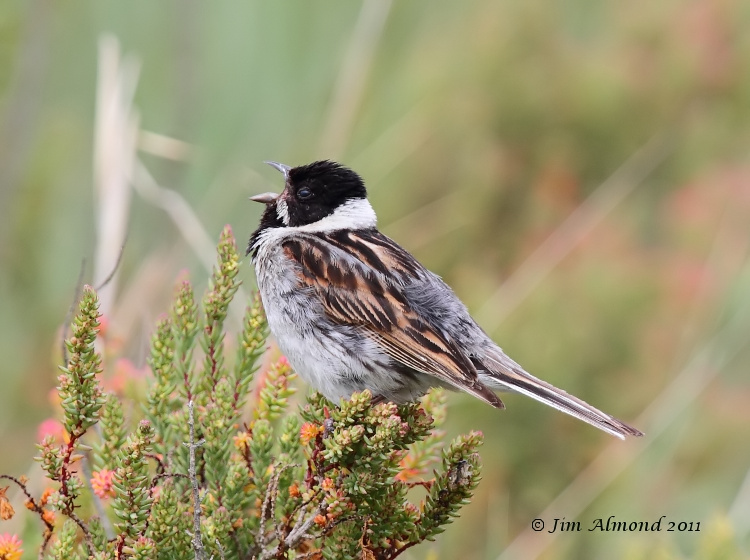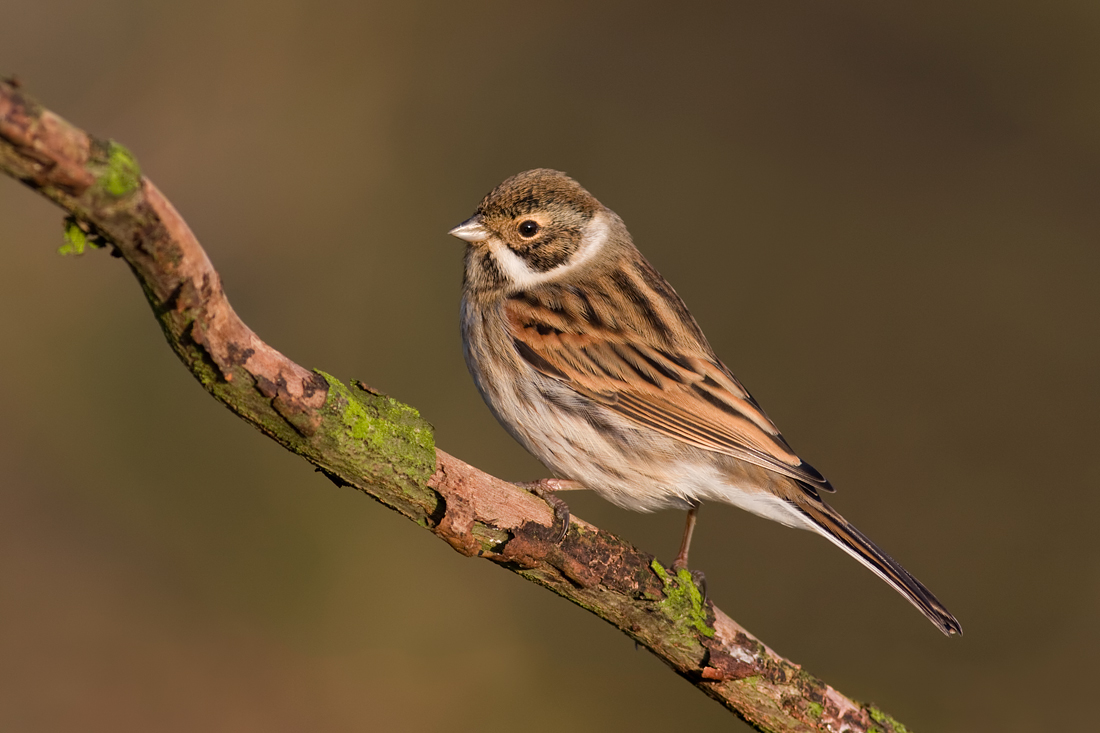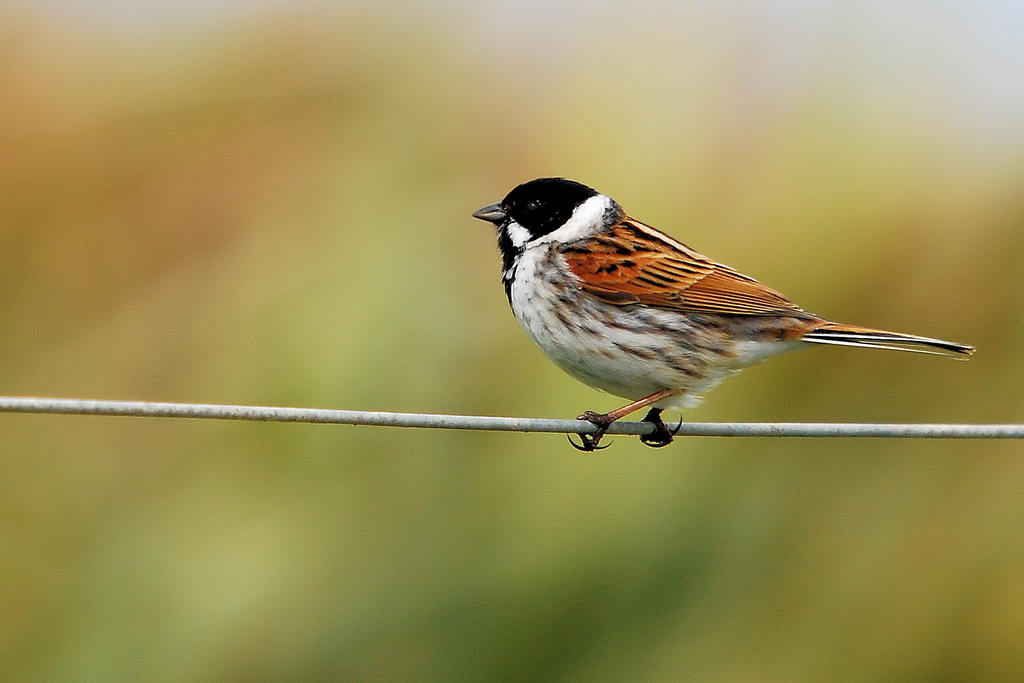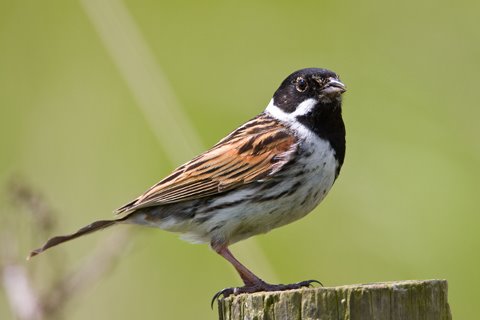
Emberiza schoeniclus
TAXONOMY
Emperiza schoeniclus Linnaeus, 1758, Sweden. Fourteen subspecies.
OTHER COMMON NAMES
French: Bruant des roseaux; German: Rohrammer; Spanish:
Escribano Palustre.
PHYSICAL CHARACTERISTICS
6–6.5 in (15–16.5 cm); 0.6–0.8 oz (17.5–22 g). Sexes differ in
color. Males have a black head and throat and a white collar.
The back and rump are brown and streaked, and the belly is
whitish with varying amounts of black streaking, especially on
the flanks. Females have a brown head with a buff stripe above
the eye and around the ear coverts, a streaked brown back, and
a light buff breast with brown streaks. Young birds resemble
females.
DISTRIBUTION
Breeds throughout Europe (except for southern Greece) east
into Russia (northern Kazakhstan) and southwest Siberia, southwest
Mongolia, and locally in China (Xinjiang (E. s. pyrrhuloides),
Heilongjiang (E. s. minor), and in northeast Siberia, Kamchatka,
Kurile Island, and Hokkaido– (E. s. pyrrhulina). Winters in western
and southern Europe, Turkey, southeast China, and Japan.
HABITAT
Breed in tall reeds, swamps, sewage farms, and marshy areas
adjacent to fresh and brackish marshes. In winter, they are
found in cultivated fields, farm lands, and open woodlands,
often not near water.
BEHAVIOR
Territorial in summer, and males advertise their territory by
singing. They regularly form flocks outside the breeding season,
often flocking with other Emberiza species. These flocks form
in September.
FEEDING ECOLOGY AND DIET
Feed on the ground or in vegetation. They commonly catch
flying insects in sally flights. They sometimes make holes in
bullrush stems to extract insect larvae. In the breeding season,
they principally eat invertebrates (especially insects) but in
winter take many seeds.
REPRODUCTIVE BIOLOGY
Monogamous, but extrapair fertilizations are common and
bigamy occurs in some populations (probably where densities are
high). The nesting season is geographically variable. The wellhidden
nest is usually placed on the ground but may be placed in
a bush or small tree. They lay two to six (usually five) eggs. Incubation
lasts 12–15 (commonly 13) days, and the young fledge after
9–13 (usually 10–12) days. Both parents feed the young.
CONSERVATION STATUS
Not threatened. There are no consistent population trends,
and the species is common in many parts of its range.
SIGNIFICANCE TO HUMANS
None known.
Photo Gallery of - Reed bunting




 Animalia Life
Animalia Life